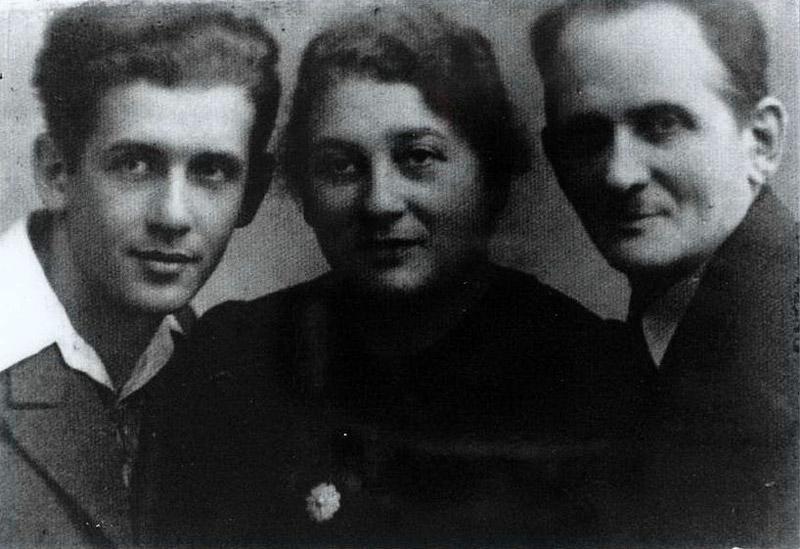

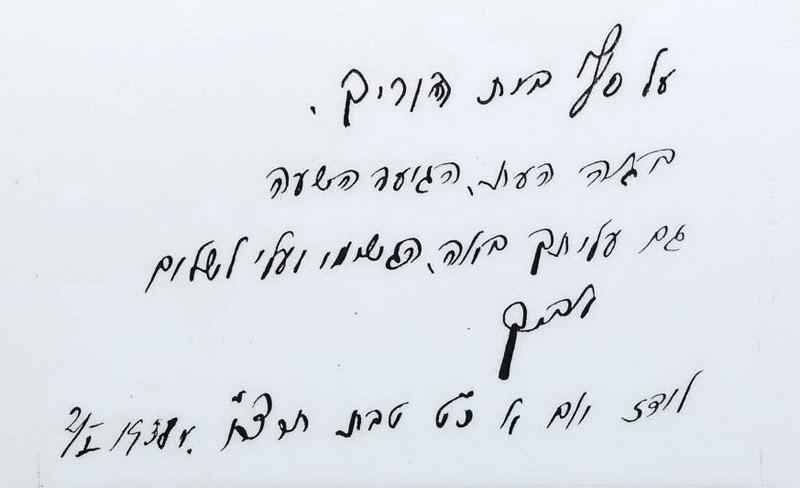

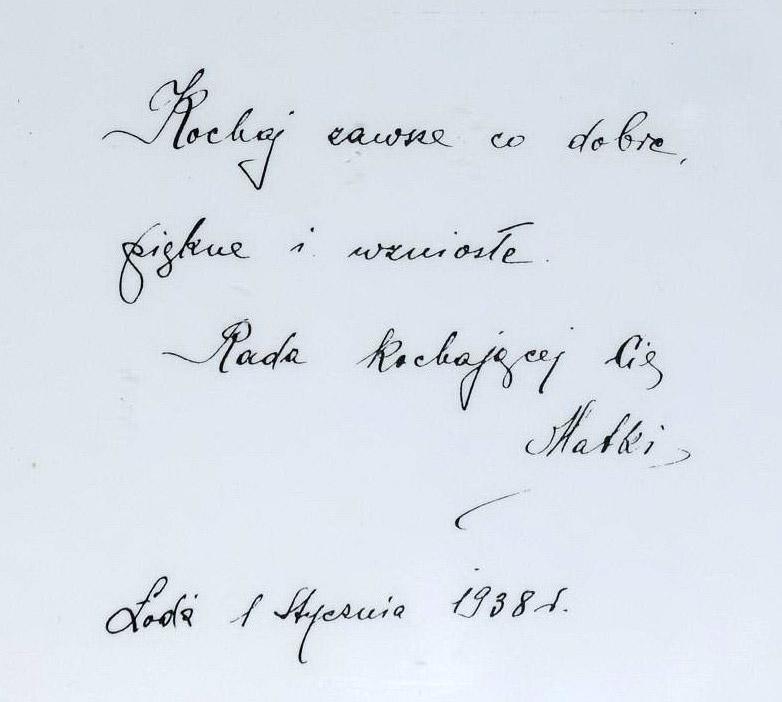

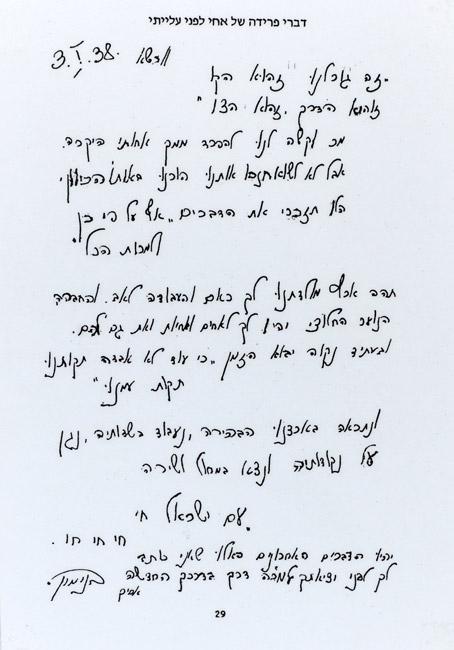

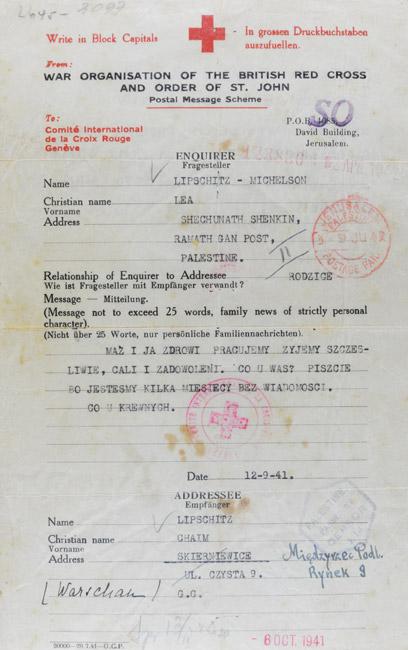

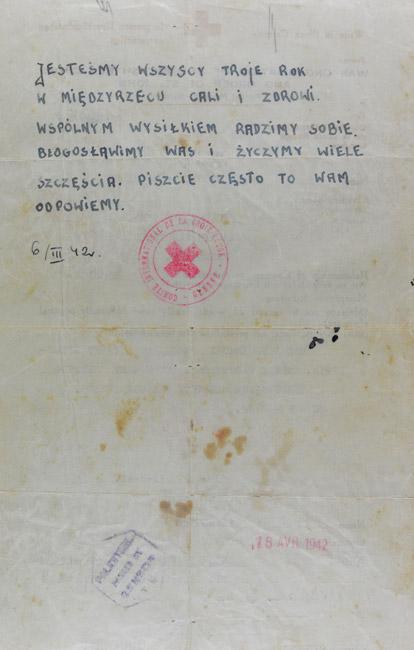

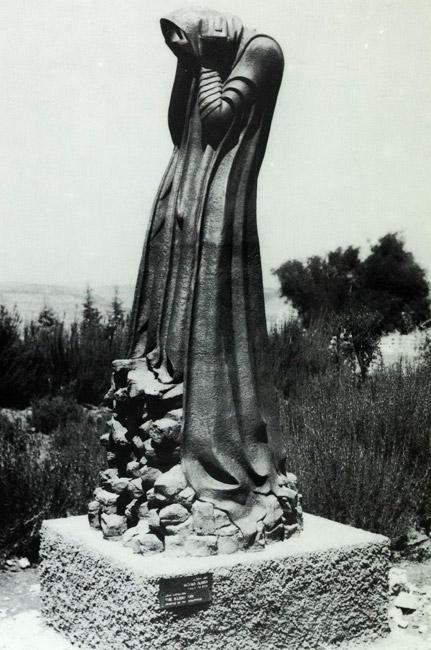

Sunday to Thursday: 09:00-17:00
Fridays and Holiday eves: 09:00-14:00
Yad Vashem is closed on Saturdays and all Jewish Holidays.
Entrance to the Holocaust History Museum is not permitted for children under the age of 10. Babies in strollers or carriers will not be permitted to enter.














Leah Michelson née Lipschitz was born on 21 May 1921 in Lodz, Poland. Her parents, Haim and Dina, were active in the Zionist Histadrut. Her father was one of the founders of the Tarbut education network in Poland. Leah was brought up to love the Land of Israel and learned Hebrew from an early age.
In 1938, due to the growing tension in Europe, Leah’s parents decided to send her to Eretz Israel, intending to follow her once they had received their awaited immigration permits.
Leah’s family wrote her farewell letters before she left for Eretz Israel.
Her mother wrote:
Always love the good, the beautiful and the noble.
Advice from your mother, who loves you.
Lodz, 1 January 1938.
Her father wrote in Hebrew:
The time has come to the threshold of your home, the hour is here; the moment of your Aliyah has also arrived. Fulfil the dream and immigrate in peace.
Father
Lodz, Sunday, 29 Teveth 5698, 2 January 1938
Her elder brother Binyamin wrote her a farewell poem in Hebrew:
Warsaw, 3/1/38
This is our destiny. This is the line.
This is the way. This is the decree.
It is bitter and difficult to part from you, my dear sister.
But we weren’t educated for nought; we have been prepared for this.
Recall the words, “Nevertheless and despite everything.”
May our Homeland be like a mother for you and may work be like a father. Society and the pioneering youth will be brothers and sisters to you and you to them. And in the future we hope that the time will come, “Because our hope, the hope of our people, has not yet been lost,” and we will see each other in our bright land; we will work in its fields, defend its positions and go forth singing and dancing.
The people of Israel lives.
Lives Lives Lives.
May these last words that I write to you before you leave be a guide to you on your new path.
Your brother, Binyamin.
Aged 17, Leah immigrated to Eretz Israel under the auspices of the Youth Aliyah program, and studied at the Ben Shemen agricultural school. One of her classmates was Shimon Peres, later to become President of the State of Israel. After completing her studies, Leah was sent to be a counsellor for youth and children in the Haifa region. She married Avraham Michelson at the end of 1940.
With the outbreak of World War II, Leah and her family lost touch. Leah unsuccessfully tried various means of contacting her family and obtaining news of their welfare. On 12 September 1941, Leah sent a letter through the Red Cross to her parents’ last pre-war address. In the letter, she told them of her marriage to Avraham. About half a year later the Red Cross managed to locate her parents – they had been moved to the Miedzyrzec Podlaski ghetto in the Lublin district – and delivered her letter to them. The document was returned to Leah at her address in Ramat Gan. On the reverse of the letter, her brother had written:
The three of us are healthy and well in Miedzyrzec. We are pooling our energies to find solutions. We send you our blessings and wish you much happiness. Write to us from time to time and we will reply.
6/3/42
After the war, Leah met a survivor from the Miedzyrzec Podlaski ghetto who apprised her of her family’s fate. Her parents had worked as forced laborers in a factory in the ghetto, and her brother had left the ghetto to join the partisans.
In May 1943 the ghetto was liquidated. Tragically, Leah’s brother Binyamin was also in the ghetto at the time of the Aktion as he had returned to visit his parents. Haim, Dina and their son Binyamin were deported to Treblinka, where they were murdered.
Leah and Avraham had three daughters. Leah studied art whilst they were growing up, and continued to be creative throughout her life. In 1962 Leah made a 2.5-meter-high basalt sculpture entitled “The Silent Scream.” The sculpture, created in commemoration of her family and all victims of the Holocaust, was installed at Yad Vashem in 1975.

Thank you for registering to receive information from Yad Vashem.
You will receive periodic updates regarding recent events, publications and new initiatives.

"The work of Yad Vashem is critical and necessary to remind the world of the consequences of hate"
Paul Daly
#GivingTuesday
Donate to Educate Against Hate


Worldwide antisemitism is on the rise.
At Yad Vashem, we strive to make the world a better place by combating antisemitism through teacher training, international lectures and workshops and online courses.
We need you to partner with us in this vital mission to #EducateAgainstHate
The good news:
The Yad Vashem website had recently undergone a major upgrade!
The less good news:
The page you are looking for has apparently been moved.
We are therefore redirecting you to what we hope will be a useful landing page.
For any questions/clarifications/problems, please contact: webmaster@yadvashem.org.il
Press the X button to continue



